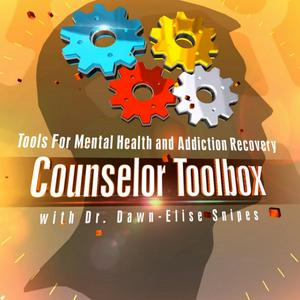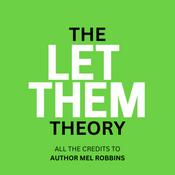Counselor Toolbox Podcast with DocSnipes

1042 episodes

1086-The Impact of Trauma on Each PIECE of Life
2025/12/19 | 1h 57 mins.
0:00 Physical Impact 19:00 Interpersonal Impact 38:00 Emotional Impact 57:00 Cognitive Impact 1:16:00 Environmental Impact 1:35:00 Spiritual Impact Learn more about your ad choices. Visit megaphone.fm/adchoices

1085-Addressing Drug and Alcohol Related Brain Damage - Counselor Training
2025/12/12 | 1h 3 mins.
00:00 Introduction: Drug-Induced Brain Damage 01:19 Physical, Emotional, and Cognitive Impacts 03:09 Alcohol’s Effect on the Brain and Body 04:19 Key Brain Regions Affected by Substances 07:22 Understanding Substance-Induced Brain Disorders 08:15 How Different Drugs Cause Brain Atrophy 08:56 Alcohol: Neurotoxicity and Deficiencies 10:59 Stimulants, Opioids, and Inhalants: Brain Impacts 14:23 Cannabis and Other Substances: Neurocognitive Effects 15:46 Substance Use, Symptoms, and Treatment Challenges 16:51 Hallucinogens and Long-term Perceptual Disturbances 20:01 Delirium and Chronic Traumatic Encephalopathy 23:04 Thiamine Deficiency: Wernicke-Korsakoff Syndrome 27:48 Diagnosing and Managing Alcohol-Related Brain Damage 31:02 Prevalence and Underdiagnosis of Brain Injury 34:39 Dementia Risks and Alcohol Consumption Guidelines 38:01 Healing the Brain: Recovery and Lifestyle Changes 42:01 Alcohol-Related Brain Disorders: Symptoms and Assessment 45:11 Treatment Options and Hope for Recovery 46:25 Vascular Dementia: Causes and Symptoms 49:28 Fetal Alcohol Spectrum Disorders (FASD) 53:01 Diagnosing FASD and Client Profiles 56:00 Treatment Challenges for FASD 58:07 FASD in Correctional and Clinical Settings 59:39 Summary: Risks and Considerations for Clinicians 01:00:26 Q&A and Resources Learn more about your ad choices. Visit megaphone.fm/adchoices

1084 - How Are Nursing Homes Failing Addiction Patients in 2025?
2025/12/05 | 57 mins.
00:00 Introduction & Overview 00:16 Defining Post-Acute and Long-Term Care 01:06 Levels and Types of Care Facilities 02:08 Addiction in the General Population 02:58 Hospitalization and Addiction Statistics 04:54 Prevalence of Substance Use Disorders in Care 05:48 Screening for Co-Occurring Issues 07:08 Medication Management Risks 09:02 Self-Administration & Diversion Concerns 12:00 Alcohol Access and Facility Policies 15:00 Unconventional Substance Use Risks 17:01 Vulnerabilities in Care Settings 18:29 Sleep, Circadian Rhythms & Recovery 20:57 Pain and Physical Vulnerabilities 23:06 History of Addiction and Detox Issues 25:09 Interpersonal & Emotional Vulnerabilities 27:13 Self-Esteem, Trauma & Communication 29:07 Emotional Intelligence & Coping 31:10 Cognitive and Organizational Vulnerabilities 34:42 Environmental Risks & Supervision Gaps 36:31 Triggers for Substance Use 39:45 Medication Management, Seeking, & Diversion 43:52 Rehabilitation Setbacks and Grief 47:05 Interpersonal Manipulation & Emotional Distress 49:08 Cognitive Triggers and Facility Management 51:05 Environmental Triggers Unique to Care Settings 52:54 Role of Antipsychotics and Misuse 53:45 Key Takeaways & Strategies for Prevention 55:52 Course Completion & Wrap-Up Learn more about your ad choices. Visit megaphone.fm/adchoices

1083 - Managing Traumatic Brain Injury and Concussions
2025/11/26 | 1h 16 mins.
Learn more about your ad choices. Visit megaphone.fm/adchoices

1082 - Essential Skills for Diabetes-Related Disability Adjustment Counseling
2025/11/22 | 1h 13 mins.
Essential Skills for Diabetes-Related Disability Adjustment Counseling for social workers, disability management and rehabilitation counselors from a diabetes EXPERT. In this video, a diabetes disability adjustment expert shares their top counseling skills for managing disabilities. Perfect for counselors, social workers, and anyone in the field of disability management! Learn more about your ad choices. Visit megaphone.fm/adchoices
More Education podcasts
Trending Education podcasts
About Counselor Toolbox Podcast with DocSnipes
Listen to Counselor Toolbox Podcast with DocSnipes, SOLVED with Mark Manson and many other podcasts from around the world with the radio.net app

Get the free radio.net app
- Stations and podcasts to bookmark
- Stream via Wi-Fi or Bluetooth
- Supports Carplay & Android Auto
- Many other app features
Get the free radio.net app
- Stations and podcasts to bookmark
- Stream via Wi-Fi or Bluetooth
- Supports Carplay & Android Auto
- Many other app features


Counselor Toolbox Podcast with DocSnipes
download the app,
start listening.





































